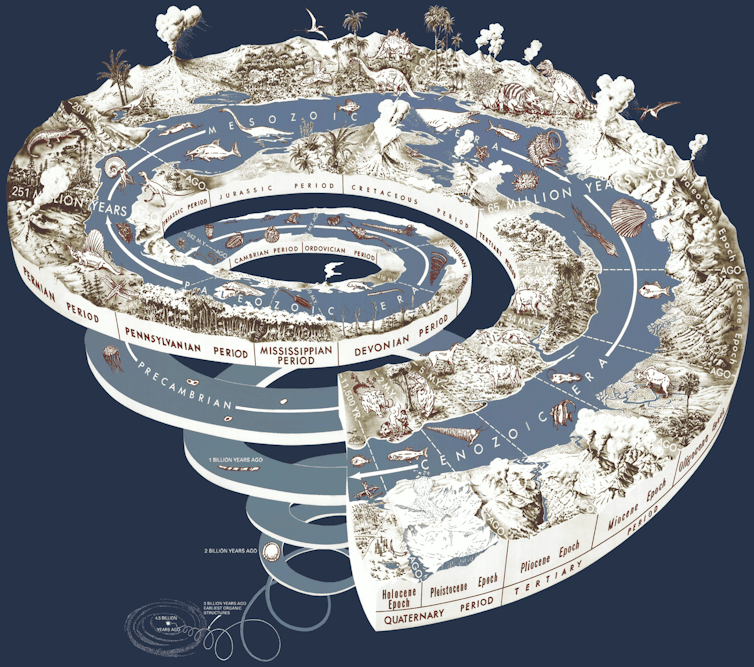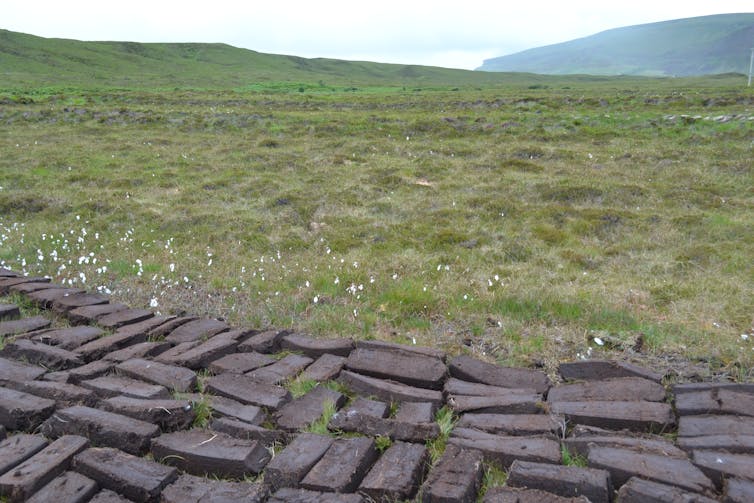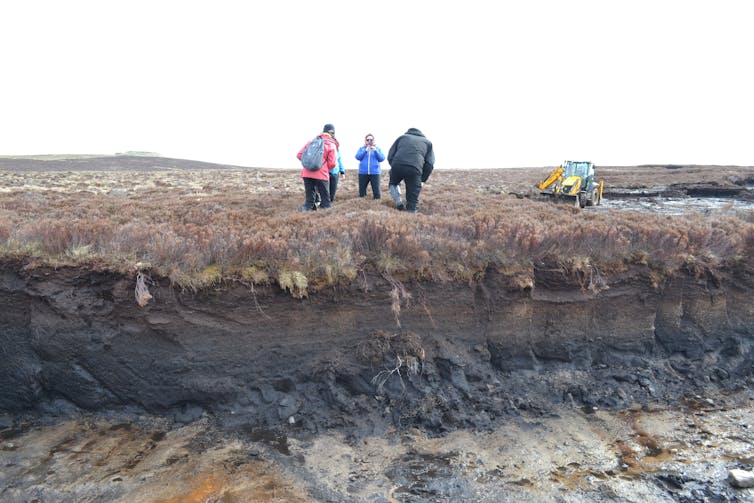A glass of whisky could help you get your head around deep time

The Scottish geologist James Hutton made a proposal in 1788 that, at the time, was extraordinarily controversial. He described Earth as a “beautiful machine”, constantly subjected to long-term decay and regeneration, that could only be understood over many millions of years. This may not sound that contentious, but the challenge this posed to humanity’s sense of time was substantial. Popular contemporary estimates of Earth’s age, such as Bishop Ussher’s calculation that it was created in 4,004 BC, were dwarfed by the magnitude of what Hutton described.
Today, we are more familiar with the enormity of the Earth’s age in contrast with our diminutive timespans. In 1981, John McPhee coined the term “deep time”, highlighting the apparent insignificance of the span of human existence in the face of geological processes. Yet such scale is inherently difficult to conceive of. And so as societies face changing environments, with challenges of energy and food security, the short-term perspective is often politically and economically dominant.
But this way of thinking is high risk. If we are to adequately respond and adapt to landscape change, we need think about time differently, take a more holistic view. As such, over the last year we have been exploring different ways in which we might understand how humans think about deep time, and how it shapes our behaviours.
 Geological time spiral. United States Geological Survey
Geological time spiral. United States Geological Survey
We started by zoning in on the everyday. Deep time, for all its vastness, becomes intimate when we trace it in things that are familiar to us. In a recent article in The Atlantic, David Farrier explains that deep time is “not an abstract, distant prospect, but a spectral presence in the everyday”. It is also in the everyday that we increasingly see our human role in shaping deep time. The Anthropocene era is characterised by the marks that we leave in the geological record.
Deep time is therefore visible in our daily lives, and if we look closely enough we can understand time through the material presence of objects.
Deep whisky
Take a glass of whisky. The processes that have led to the enjoyment of a dram by no means begin with the opening of a distillery. Geological processes occurring over millions of years all contribute towards its particular taste. Our project, conducted by a team consisting of an anthropologist, a geologist, a literary scholar, a palaeoecologist, and a radiocarbon dating expert, was carried out in Orkney, and so for the whisky element of our work we focused on the well-respected Highland Park distillery. Beyond colour, viscosity, aroma, and taste, we wanted to experience and apprehend how long processes of time, far beyond our lifespans, contributed to the amber liquid.
Whisky requires key ingredients: barley, yeast, water, a fuel source (in this case peat), oak wood barrels (often seasoned through years holding Oloroso sherry), and copper crafted pot stills. Water is added to the mix after the barley has been malted and ground down into “grist” to prepare the spirit.
Because so much water is needed, streams percolating through millions of years of rock supply most distilleries. And the chemistry of this water impacts the final taste. Orkney has unusually hard water, drawn through calcareous Old Red Sandstone deposited 359–416m years ago. The malting process also affects the taste. Highland Park, for example, is famous for its floral peaty flavour that derives largely from the peat smoke used in this process. Peat is the slow accumulation of partially decomposed organic matter building up under wet conditions over thousands of years.

Peat through time
The fuel used will connect us with cultural as well as geological history, if looked for. Orkney, for example, has a rich history of cutting peat, a process referred to in the 12th century Norse Orkneyinga Saga but believed to have been started long before then. While few in Orkney cut their own peat today, some still employ their tools and inherited knowledge to get fuel for the cold times.
Local poets such as George Mackay Brown and Margaret Tait captured the communal practice of peat cutting. Mackay Brown depicts men, women and children out on the hill, “small blades glitter[ing]” at dawn as they release the wealth of the peat through a ritualistic exchange of labour. For both poets, peat is also a point of origin, its wet blackness recalling its own beginnings in the fiery “chaos” of the Earth’s centre; the vast temporal and spatial depth of our planet’s core opened up to the human imagination through the everyday presence of the peat.
The characteristics of peatlands also make them excellent archives of environmental change, like a book that can be read through time. Peat exhibits a coherent stratigraphy that captures past landscapes and how humans interacted with and transformed them. Michelle Farrell, for example, has analysed pollen trapped in different peat layers from a 7,000-year-old core sample from Hobbister Moor, the peat used by Highland Park. These microfossils enabled the reconstruction of the environments people inhabited since the Mesolithic, explaining how woodlands retracted owing to climate changes and human impacts, as well as the spread of the characteristic heathland that dominates Orkney today.

The reconstruction of trends that work at time scales beyond our human experience as well as unravelling human-environment interactions are the treasures that a deep time approach gives us.
Past, present, future
Digging into the peat, we also look to the future: is it really sustainable for humans to consume resources thousands of years in the making? The depletion of peat impacts upon unique habitats, highlighting the mismatch between human consumption in the short term and the long-term processes that generate the resources we depend on. Peat can be used in a relatively sustainable manner through careful management and by experimenting to establish the best conditions for peat regrowth. Yet the sustainability of peat extraction remains an open question: as the ecologist Kimmo Tolonen has argued:
Peat belongs to the renewable resources only in the geological timescale.
Thinking about an everyday object in such an interdisciplinary way allowed us to engage with deep time through a seemingly everyday glass of whisky. Appreciating the deep geological timescales that shape rock, water, and the taste of the whisky gave rise to stories about the generations who have worked the peat; the creative poetics and histories of peat; and the environmental and geographical histories revealed by looking at peat under the microscope.
 Deep time’s vastness can seem out of scale with human life. Yet thinking through materials and different kinds of knowledge and local expertise, we see how it protrudes into the everyday. Thought of like this, any object might serve as a lens through which to see deep time’s vivid presence today.
Deep time’s vastness can seem out of scale with human life. Yet thinking through materials and different kinds of knowledge and local expertise, we see how it protrudes into the everyday. Thought of like this, any object might serve as a lens through which to see deep time’s vivid presence today.
Carina J. Fearnley, Lecturer in Science and Technology Studies, UCL; Lourdes López-Merino, Research Fellow, Brunel University London; Niamh Downing, Head of English & Writing, Falmouth University, and Richard Irvine, Research Fellow, The Open University.
This article was originally published on The Conversation. Read the original article.
Contact our news team
For all out of hours enquiries, please telephone +44 (0)7901 515891
Contact detailsNews & articles

OU gets £106k from UKRI for a project to assess AI-enhanced grant peer review
The Open University has secured £106,078 in funding to lead a new research project exploring how AI and large language models can transform the peer review process for research grants.